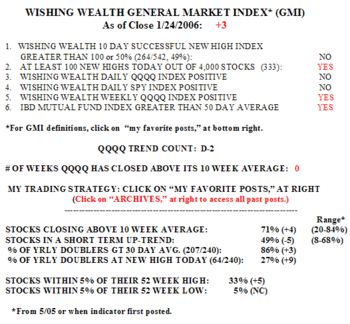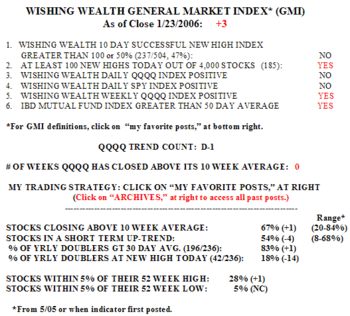The GMI increased one to +4. This is because 52% of the 372 stocks in my universe that hit a new high 10 days ago closed higher on Wednesday than they closed 10 days before.  There were 322 new 52 week highs. But only 33% of the Nasdaq 100 stocks rose, along with 42% of the S&P 500 stocks and 57% of the Dow 30 stocks. The percentage of stocks in a short term up trend declined 3, to 46% and the percentage closing above their 10 week averages also declined 3, to 68%. Wednesday was the third day of the QQQQ decline (D-3). With the QQQQ below its 10 week average, this remains a good time to sit on the sidelines…….
There were 322 new 52 week highs. But only 33% of the Nasdaq 100 stocks rose, along with 42% of the S&P 500 stocks and 57% of the Dow 30 stocks. The percentage of stocks in a short term up trend declined 3, to 46% and the percentage closing above their 10 week averages also declined 3, to 68%. Wednesday was the third day of the QQQQ decline (D-3). With the QQQQ below its 10 week average, this remains a good time to sit on the sidelines…….
Please send your comments to: silentknight@wishingwealthblog.com.

